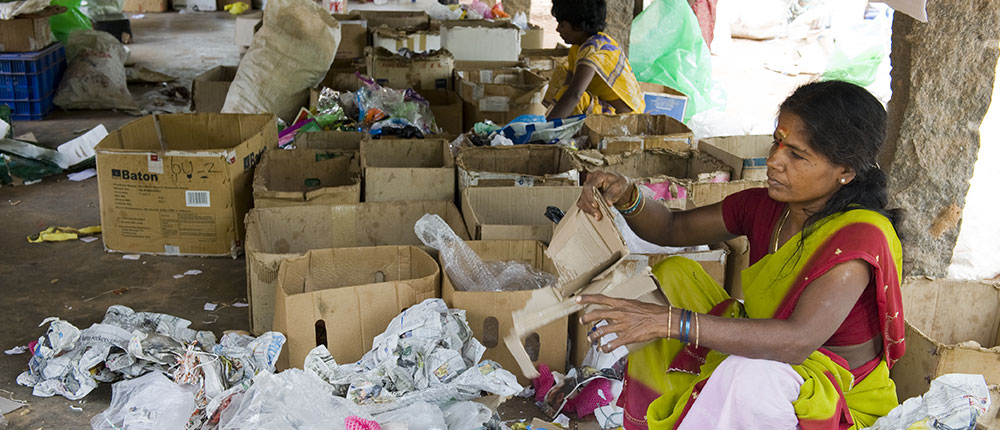Better resource efficiency and material recovery can reduce India's import dependence and waste generation

India is currently the second largest consumer of materials after China. In 2015, its material consumption stood at seven billion tonnes, up from 1.18 billion tonnes in 1970. In the face of a rising middle class and rapid increase in the penetration of several consumer durables over the past decade, material consumption can be expected to go up further as more Indians climb out of poverty.
More material consumption largely results in usage of virgin material. This material is either mined or manufactured domestically, or imported. In fact, India's resource extraction, which stands at 1,580 tonnes/acre, is much higher than the global average of 450 tonnes/acre. However, its material productivity is lower than the global average. The recycling rates are much lower than developed countries (25% vis-à-vis more than 60%) and there is also low material recovery efficiency in the post life-cycle stage. Most of waste management and post life-cycle extraction of material, if any, is largely handled by the informal sector with primitive processes and low technical know-how and finances. In fact, India's average cost of material in total production cost is estimated at more than 70% vis-à-vis 40 to 50% in developed economies.
A high use of resources also means that India is already a net importer of resources, dominated by fossil fuel imports, and critical materials (for which India is nearly 100% import-dependent).
A quick comparison of material used between 1980 and 2009 vis-à-vis the consumption expected between 2010 and 2030 reveals that India would need 188 billion tonnes of materials in these 20 years (to compare: India extracted 66 billion tonnes in 1990 – 2009); 51 billion tonnes of biomass (India used 37 billion tonnes in 1990 – 2009); 81.6 billion tonnes of non-metal minerals (18 billion tonnes used in 1990 – 2009); 45 billion tonnes of fossil fuels (eight billion tonnes used in 1990 – 2009); and 10.5 billion tonnes of metals (2.6 billion tonnes used in 1990 – 2009).
The import dependence increases the Indian economy's vulnerability to global geopolitical and economic risks, apart from adversely affecting the trade balance.
Now consider an alternative scenario, one where India's material demand is met from its material use itself, where there is a potential to stabilise raw material supply for industry, reduce pressures on the ecosystem, and create green jobs. This scenario could result from a resource efficient usage of materials.
By 2025, India would be able to generate over 15 to 20 million tonnes of steel scrap from automotive sector. This is more than the current steel scrap imported by India. If not reused wisely, it will only end up clogging India's already scarce landfill spaces. However, use of what is termed the 6R principle can make import dependence nil in steel scraps by 2025.
The 6R principle is key to driving resource efficiency through reduce, reuse, and recycle, re-manufacture, repair and refurbishing, across different sectors/products and resources. It optimises material consumption at every stage of the value chain. According to TERI's calculations, using this principle in material use and reuse can save India 21 million tonnes of iron ore, 8.25 millionn tonnes of import of coking coal, 3.75 million tonnes of limestone, 4.5 million tonnes of slag generation and 31.5 mn tonnes of carbon dioxide by 2025.
Keeping these benefits in mind, TERI has suggested an integrated resource efficiency approach in policy making. It has also come out with the Reference Report for National Resource Efficiency Policy for India that has been presented to the Union environment ministry.
While India has deployed resource efficiency policies in the past, they lacked a life-cycle approach and were more isolated interventions. To take forward the resource efficiency agenda in India, institutional structures are required that take forward various stakeholders ranging from civil society and academia to manufacturers, the informal sectors handing waste and formal recyclers.
To find out more, you can see the full report here, and find an explainer here.
